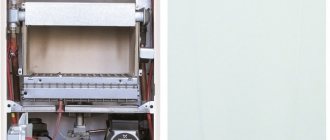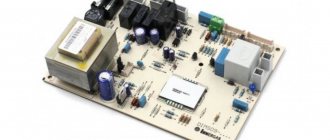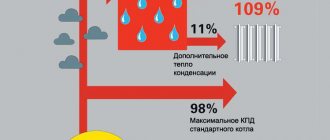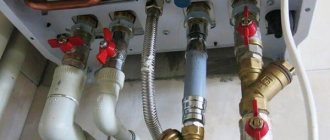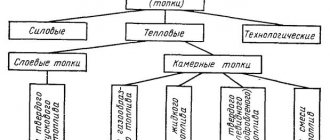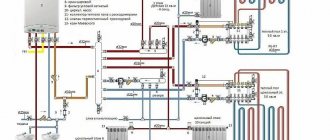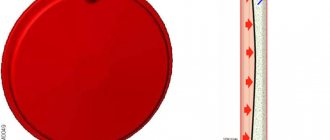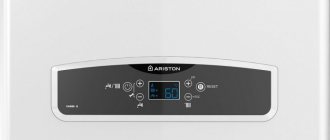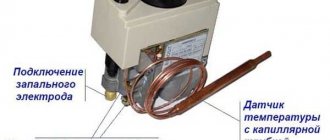There are two main ways to prepare hot water. First, the water is heated while moving through the heater and supplied to the water tap. Such a heater is called a flow-through heater.
The second method is to heat a large volume of water in a thermally insulated container, then gradually consume it. Such a heater is called a storage heater. The energy source is usually gas, electricity or heated coolant from the heating system.
Flow-through – high peak power
The instantaneous heater must be relatively powerful in order to provide the required flow of hot water to the tap. For a shower head, a power of at least 10 kW is required, for filling a bath - from 15 kW, for two hot water taps - from 20 kW.
Heating water with an electric instantaneous heater is not cheap. In addition, you need a three-phase connection (over 6 kW) and a special permit for higher power.
It is optimal to provide several taps by installing a compact electric flow-through heater on each of them. At the same time, protection is installed against their simultaneous operation, so as not to overload the network.
A cheaper option is heating water using gas. A gas water heater or a second circuit of the heating boiler is used. The power of such devices can be enough for two taps, and hot water is cheaper.
Disadvantages of flow-through
With a flow-through circuit, the heater should be located as close to the tap as possible in order to drain less water until it gets hot. The recommended distance is no more than 5 meters. But in any case there will be excessive consumption of water and energy. A similar drawback is typical for a storage heater.
Another disadvantage of a flow-through DHW (hot water supply) circuit is the inability to pick up some hot water. Each device has its own minimum power. Therefore, when water flow is low, it simply does not turn on. This also results in waste of water and energy.
Pressure surges in the system cause discomfort because they change the outlet water temperature.
In retail outlets, in order to sell an unsuitable flow-through electric heater, they simply indicate that it produces so many liters of water at a temperature, for example, +50 degrees, which at first glance is acceptable. But it is not indicated at what temperature the water is heated. The key characteristic of such a device is the temperature difference. After all, cold water is usually +6 - +10 degrees, and not +15 or +20.
Storage water heating system
The main advantage of an electric storage tank with a power of 1.5-2.0 kW is that it can be installed anywhere, in any house or apartment where there is a 220 V power supply. Its volume is usually 25 - 150 liters (running volume 50 - 100 liters) . The water in it is heated gradually to a predetermined temperature, and when withdrawn, a large flow rate is possible; the temperature decreases gradually.
It is cheaper to heat water with a gas storage heater with a low-power burner (up to 3 kW). The fact is that such a heater does not require a special chimney. But it can only be installed in agreement with Gorgaz, probably on a separate project. Provided with air from the room (with an exhaust system).
Disadvantages of savings
- Limited amount of water, which can create difficulties. For example, if one portion of the tank volume is consumed for bathing, then it takes a lot of time to prepare the next volume.
- The heater must be installed next to the water supply; if the bathroom and kitchen are separated, then a separate storage tank must be installed on each tap.
- Energy is wasted due to cooling of unused hot water in the heater.
- Excessive consumption of water when draining water from the tap, which has cooled in the pipeline.
Indirect heating boiler - stable hot water system
The advantage of an indirect heating boiler is that it uses energy from the heating system for heating, which is abundant and usually not expensive. Therefore, there can be a lot of hot water, its temperature is stable, and water is cheaper.
An indirect heating boiler is a storage tank with a capacity of 100 - 300 liters. Heating is carried out by a spiral pipeline through which the coolant heated to 80 - 90 degrees moves.
Heating systems are created in such a way that when the hot water supply cools below a threshold value, for example +50 degrees, the boiler switches to heating the boiler. At the same time, it produces an increased temperature and operates at full power, heating the hot water supply to the upper threshold value, for example, +60 degrees. After which it switches back to heating.
With buffer capacity – the largest energy reserve
In a buffer tank, the opposite is true - a large-volume container is used, about 1 ton or more filled with coolant, and the heated water moves in a spiral, i.e. direct-flow heating occurs. But when additional taps are opened, its temperature changes slightly, since the design has a large reserve in terms of the amount of transmitted energy.
The temperature of the hot water will be the same as that of the heating fluid. Sometimes this is not suitable, so a mixing unit is also included in the water supply scheme to reduce the temperature...
Heating systems with solid fuel boilers are mainly supplied with a buffer tank. How and why buffer capacity is used
Other features of heating water by heating
Single-circuit gas or liquid boilers are often equipped with a boiler. Which boiler to choose - single-circuit or double-circuit
Another feature of the system is the ability to create constant circulation of water through a ring water supply pipeline. Then, when you open the tap, you immediately get hot water. Cooling of water is not considered a loss of energy, because it is spent on heating the house.
There is still an opportunity to save - an additional heating coil is placed in the boiler and connected to the solar collector. The sun's energy is called free energy; in this case, the cost of solar collectors pays off. This makes it possible to heat water in the summer; if there is not enough energy, the boiler is connected.
Layered heating boiler
The main disadvantages of a conventional direct-flow heating system with a gas heater (second circuit of the boiler) or electric are solved by installing a layer-by-layer heating boiler. One or more per tap. It is a heat-insulated container into which hot water is supplied from above. Its fence is also carried out from the same level.
Such a boiler makes it possible to simultaneously obtain a lot of hot water at a stable temperature. With it you can pick up “a little water” and also ensure the least amount of cold drainage. A conventional heating boiler can also be used as such an intermediate storage tank.
Error - incorrect connection of the DHW boiler
One of the common mistakes when creating a hot water supply system in a house is connecting an indirect heating boiler to the second circuit of a double-circuit boiler. This circuit itself is designed for preparing hot water, so it has a maximum temperature limit of +60 degrees to prevent thermal burns.
Accordingly, it is not able to heat the water in an indirect heating boiler to the required temperature, since the required coolant temperature must be +80 degrees. As a result, the boiler operates in emergency mode, and the water does not heat up. Such a boiler can only be connected to a heating circuit... By the way, an indirect heating boiler can also be connected to a solid fuel boiler. In more detail, connection diagram for an indirect heating boiler with a solid fuel boiler
Now the most comfortable and economical solution for creating a hot water supply system is to install an indirect heating boiler, where this can be done. The rest of the hot water supply schemes can be considered forced decisions, which are dictated by circumstances, for example, savings when creating...
There is a requirement of the rules: independent connection of a heating unit to the main gas pipeline is strictly prohibited. But the installation and connection of a double-circuit gas boiler to the heating system and to the electrical network of a private house is completely acceptable. The main thing is not to make mistakes in the pursuit of savings. We will try to warn you against them.
Installing the boiler correctly
Unlike the installation of solid fuel and electric heating units, strict requirements are imposed on the installation of gas heat generators in private homes. The procedure is like this:
- You contact the organization supplying natural gas for permission to connect to the external network. The company issues technical specifications (TS) for connection to the main line.
- Based on the issued specifications, the licensed company develops design documentation approved by the engineers of the gas supplier organization.
- After the project is approved, the company's trained personnel connect the gas-using installation to the external network.
An example of a drawing from a gas boiler house project for 2 water heating units of different capacities
Clue. When contacting the management organization, take the technical documentation of the private home and the passport of the purchased heater. Point two: the employees of the gas office will probably suggest you a suitable design company.
Hence the conclusion: you should start installing and connecting a double-circuit boiler yourself at the design stage, when the heating unit has a clearly allocated place in the house. If it is installed in violation of the rules, then Gorgaz specialists will refuse to connect the main pipe.
Although the design engineer must know all the requirements for the placement and connection of a gas boiler, it will also not hurt you to familiarize yourself with the rules:
- room for the location of the heat generator: kitchen (if the power does not exceed 60 kW), a separate room on any floor (up to 150 kW), attached or separate furnace room;
Attached boiler room made of aerated concrete blocks - the minimum height of the kitchen or furnace ceilings is 2.5 m, the volume is at least 15 m³;
- ventilation: natural air exhaust in the amount of 3 room volumes in 1 hour, to add combustion air to this amount (the volume is indicated in the heater’s passport);
- the walls of the combustion chamber must be non-flammable or protected from fire and the spread of flame;
- the minimum permissible area of the transparent part of the windows is 0.03 m² for each cubic meter of combustion volume (called an easily resettable structure that flies out during a gas explosion);
- passage in front of the heating unit - no less than 125 cm, on the sides - 70 cm for maintenance;
- the distance from the boiler to the vertical chimney duct is no more than 3 m.
Note. Kitchen ventilation is provided through a window plus a gap under the entrance door with an area of 0.025 m². Passages on the sides and rear of the heat generator are made if maintenance is necessary, while in the front it is mandatory.
When installing a wall-mounted gas boiler on a wooden partition, a sheet of non-combustible material is placed under the housing:
- roofing steel 0.8-1 mm thick;
- asbestos 3 mm (unsuitable in the kitchen due to the dust generated);
- basalt cardboard;
- mineralite slabs.
The protection should exceed the dimensions of the case by 10 cm, on top - by 700 mm, which is what is done in the photo.
The distances from the mounted heater to the nearest structures or cabinets are indicated by the manufacturer in the operating instructions, as shown in the diagram. The floor heat generator is installed on a non-combustible base; the wooden floor must be protected with a sheet of metal.
Types of gas heating boilers
Gas boilers used by consumers for heating individual houses are divided into the following categories:
Single-circuit direct heating. Inside this device there is a heat exchanger through which the coolant passes cyclically in gravity mode or by pushing it with a circulation pump. The temperature of the heating fluid in the system can be automatically regulated by switching the speed of the circulation pump or the flame of the burners.
Dual-circuit. Typically, in most country individual houses there is no hot water supply (DHW) and the consumer has to solve the problem of providing it. To do this, a second heat exchanger is placed in the heating boiler, through which heated water flows from the cold water supply main of the cold water supply system. When a hot tap is opened, the water flow moves along the DHW circuit and passes through the secondary heat exchanger and is heated. This scheme has the following disadvantages:
- In the DHW pipeline, when the taps are closed, water does not circulate and is in a cooled state. For hot water to arrive, you have to wait for it to pass and heat through the secondary heat exchanger. As a result, there is an unplanned overconsumption of cold water and a loss of time while waiting for a hot flow of tens of seconds (depending on the length of the water pipe and its diameter).
- The volume of the DHW circuit in double-circuit units is quite small. This is due to the fact that the inlet pipes for cold and hot water are usually made with a diameter of 1/2 inch, which cannot provide a high level of water consumption.
As a result, most dual-circuit models are capable of working effectively at only one water intake point.
The advantages of this type of equipment include lower cost compared to single-circuit analogues.
It is recommended to install double-circuit models in houses with a total area of no more than 150 m2 with one bathroom.
Rice. 2 Main components of a wall-mounted single-circuit boiler
With an indirect exchange boiler. The system consists of a single-circuit boiler and a large-volume thermally insulated boiler tank containing heated water. The heating process in the boiler is carried out by passing heating fluid from the heating circuit through its internal heat exchange coil. In a system with a boiler, water constantly circulates through the hot water pipeline, and due to its large volume in the tank, a large number of water points can be connected to the main line. As a result, the consumer always has hot water in any volume with an average number of water intake points of about three.
Units with an indirect exchange boiler are recommended to be placed in houses with an area of more than 150 m2.
According to the type of installation, gas boilers are divided into:
Wall-mounted. These are small-volume units that are hung on the wall of the boiler room and take up little space. Wall-mounted models produce thermal power from 10 to 60 kW with a copper heat exchanger, their main features:
- Average service is 10 years.
- During operation, the copper heat exchanger allows significant temperature differences between supply and return.
- The temperature of the heating fluid can vary from 25 to 80 °C.
- The average efficiency of wall-mounted equipment is 92%.
- The units are lightweight; the 24 kW model weighs no more than 30 kg.
- The average cost of wall-mounted appliances is 500 USD. e.
- Horizontal coaxial chimneys are used to remove smoke.
Rice. 3 Main components of wall-mounted double-circuit models
Floor-standing. Boilers of this type produce thermal power from 20 to 150 kW, their distinctive features:
- The efficiency of floor-standing models does not exceed 90%.
- The massive cast iron heat exchanger has a service life of up to 50 years.
- Due to the use of cast iron, the weight of the unit is quite high; for example, a 24 kW model weighs 130 kg.
It is worth noting that in addition to cast iron, floor-standing units are also produced with steel heat exchange units.
- The operating temperature of the coolant is 60 - 80 °C, with the difference between the supply and return of more than 20 °C being inadmissible due to the likelihood of cracking of cast iron.
- The average price of floor-standing models is 800 USD.
- Almost all floor-standing units are designed to use a vertical chimney.
Condensation
This type of wall-mounted gas boiler is one of the latest developments in the field of heating equipment; its main difference from conventional ones is its higher efficiency, reaching up to 98%. This indicator is achieved due to the fact that to heat the coolant, thermal energy is taken from the combustion products, reducing their outlet temperature to 50 ° C. In this case, inside the boiler heat exchanger, the liquid from the hot smoke turns into steam and, after cooling, falls into condensate, after which the process is repeated cyclically.
Condenser-type units are usually wall-mounted and have a thermal output ranging from 20 to 110 kilowatts.
Rice. 4 Main components of the floor-standing unit
Tying wall models
From the bottom of the gas double-circuit boiler there are 5 fittings with external threads, designed to connect the following lines (from left to right):
- Supply of heated coolant to the heating system.
- Output of hot water directed to consumers (bathroom, kitchen, etc.).
- The gas pipe connection is located in the middle.
- Cold water inlet.
- Return pipeline from the heating network.
The location of the pipes on all suspended units is the same. If you are interested in knowing the reason for installing the fittings in this order, we suggest watching a video about the operating principle of a double-circuit wall-mounted heat generator:
Important note. Five outputs are far from a sign of a boiler with two circuits. Manufacturers of water heating equipment often supply single-circuit heat generators with additional pipes for connecting an indirect heating boiler, placed in the same order.
To connect a gas unit to the heating and electrical lines of a private home with your own hands, prepare the following set of products and materials:
- ball valves with American sizes ½ inch - 3 pcs.;
- the same, with a diameter of ¾” – 4 pcs.;
- mesh filter for water and coolant (also known as a mud filter) – 2 pcs.;
- gas filter;
- expansion tank;
- pipeline fittings – tees and elbows;
- three-core electric cable brand VVG with a cross-section of 2.5 mm²;
- automatic two-pole switch with a rating of 20 amperes.
This list is recommended for wall-mounted boilers of the poorest configuration, equipped with an open combustion chamber. Products of the middle and highest price categories, which are mini-boiler rooms, are equipped with their own gas filter and expansion tank.
It is recommended to compare the dimensions of the standard heat generator tank with the amount of coolant in the heating system, following our instructions. In a situation where the pipeline network is too large and the tank volume is insufficient, an additional membrane tank must be installed.
Connection diagram to the heating system
In reality, wiring a dual-circuit heater is not a problem; there are only a couple of nuances, which we will consider further. You need to understand one thing: a gas boiler is a reliable product; during its entire period of operation it is unlikely to need to be removed and turned off for repairs. Such situations happen 1-2 times during the service life.
The valve in front of the filter on the heating return is needed to clean it without draining the coolant
Hence the conclusion: shut-off valves are installed primarily to service the heating system. It is unlikely that you will have to cut off and dismantle the heat generator.
Above is a standard connection diagram for a wall-mounted double-circuit boiler, found in every technical data sheet for the product. We expanded it by depicting the wiring and possible consumers. Based on the diagram, perform the tying taking into account the recommendations:
- Place taps with a diameter of ½ inch (DN15) on the fittings for gas, cold and hot water.
- Mount valves of size ¾” (DN20) on pipes with coolant. The third tap is for draining/recharging the system.
- The fittings are screwed down with the American ones.
- Install mud traps at the inlet from the water supply and heating networks in a horizontal position with their nose down, this makes them easier to clean.
- Connect the external expansion tank to the return pipeline using additional fittings to isolate and empty the tank, as illustrated in the diagram.
- Place the drain/fill pipe with a tap at the lowest point of the system.
Advice. It is much more convenient to pack and screw the valves to the fittings before hanging the boiler on the wall. If butterflies or handles interfere with rotation, remove them by unscrewing the nut on the rod. The gas valve is installed through a dielectric gasket.
Two pairs of valves on the heating pipes allow you to remove the heat generator and not drain the antifreeze
For homeowners who fill the system with non-freezing coolant and want to play it safe, an alternative piping scheme for a double-circuit heater is recommended. Thanks to a pair of taps installed on the supply and return, you can dismantle the boiler and service the system without draining the antifreeze.
The scheme is relevant for two- or three-story buildings with water-heated floors and a radiator network, where an additional expansion tank is indispensable. Our expert Vladimir Sukhorukov will reveal the essence of the issue in more detail in a training video:
Connection to the home electrical network
The requirements for connecting electricity are quite simple - you need line protection in the form of a circuit breaker and grounding. If there is no powerful equipment in the furnace room, for example, an electric boiler, then it is not necessary to run a separate cable to the switchboard. Briefly, the requirements are:
- Place the switch in a safe place where water or coolant will not enter in the event of a breakthrough.
- The presence of a wire connected to the ground loop is mandatory. If the cord included with the boiler does not have a third core, connect the conductor to the steel body of the heat generator.
- It is not allowed to use metal heating and water pipes as grounding conductors.
- Lay the cable in a protective corrugated sleeve.
Simplified electrical connection diagram
For reference. European-made turbocharged boilers are sensitive to the correct phase connection. If you confuse the neutral and phase wires, the electronic control unit will not start the boiler.
In areas with unstable mains voltage, it is better to power the unit through a stabilizer that protects the electronics from burnout. Frequent interruptions in the power supply are a reason to purchase and install an uninterruptible power supply unit, otherwise if there is a shutdown you risk being left without heat.
Option for hot water supply in a small house with autonomous heating
Boiler room in the cottage
Let's start with a small private house with autonomous heating from a boiler installed in it. The following heating and hot water supply schemes are possible for it.
The first is the simplest, but incorrect option
It would seem that hot heating is the easiest thing to do in it. We cut into the heating system and take some of the water from it. But this cannot be done for several reasons.
- Water contains salts that cause scale deposits on heating system elements. This interferes with normal heat transfer.
Even if we do not use a water treatment (softening) device in the system, the salts that entered the pipes and boiler during the initial refueling have already been deposited on the walls. New ones, with the exception of a small amount that enters during replenishment, have nowhere to appear. If there is a constant selection, then the water will be constantly renewed, and the scale will grow quickly.
- If (which is extremely rare in private homes) a water treatment system was installed, its productivity will not be enough to provide not only replenishment, but also a hot water supply system. Installations with the required bandwidth are more expensive.
In addition, softened water does not taste good. In addition, add the price of constantly consumed reagents (and some may be harmful to health).
- The water in the heating system can be contaminated by rust washed away from pipes, radiators and the boiler. For hot water supply, either polymer or galvanized pipes are used, and their length is shorter.
- With the constant selection of network water, it may be lost from the system and boil, and then explode the boiler. Even the automatic replenishment system does not save you from this.
How to properly install hot water supply systems in this case
As a rule, the heating and hot water supply scheme in this case is built according to one of several possible options.
Install a separate gas or electric boiler
Boilers are commonly referred to as devices for heating water (water heaters). If the boiler is gas or electric, it is actually a boiler (in English boiler - boiler) designed to heat water in a hot water supply system (we will talk about other varieties below). Then in the house we will have two separate hot water heating systems not connected to each other.
The advantages of this system.
- Wiring is a little easier.
- To prepare hot water, you do not need to fire up the boiler.
Minuses:
- the price of the system is higher than that of other options presented below;
- More space is required to accommodate equipment.
This approach is justified if a solid fuel boiler is installed and you do not want to light it, for example, in the summer. Although the cost of heating with electricity is higher, when using small amounts of water (to wash dishes), for the sake of convenience, you can spend extra money.
Double-circuit boiler
Instead of a conventional boiler, a double-circuit boiler is installed. In addition to heat exchangers for heating network water, it also contains heat exchangers for hot water supply. Their coating is designed to work with drinking water and does not impair its quality.
A water supply must be connected to the input of the second circuit, and ready hot water is taken from its output. As a rule, such industrial boilers have systems for monitoring and regulating water temperature. If we are talking about devices that burn gas or liquid fuel, then the controller for heating and hot water supply systems built into the boiler automatically lights the burner when water consumption is recorded.
This approach also has both pros and cons. The advantages include:
- no need to purchase and install additional equipment, space is saved;
- the pipeline layout is simplified.
There are also disadvantages:
- a double-circuit boiler is more expensive than a conventional boiler of the same power;
- The hot water supply circuit of the boiler, although designed for running water, is still covered with scale and requires periodic cleaning.
Install a flow-through heat exchanger
Diagram of a heating and hot water system with a flow-through heat exchanger
The most justified option. In this case, a flow-through heat exchanger is inserted into the heating system; it is also called a boiler. It is a system of tubes through which water circulates, in a casing washed by another stream of water.
- That is, heating coolant circulates through one circuit, and tap water circulates through the other, which heats up.
- Such a heat exchanger is also periodically cleaned, but due to the simplicity of the design, this is easier to do than descaling in a conventional boiler. In addition, since heating is carried out not by a high-temperature flame, but by network water, deposits form slowly.
- There are two versions of such boilers with a straight block of internal pipes and with a bundle of them curled into a spiral. The first is larger, but cheaper and easier to clean, the second is more expensive, but more compact.
- If necessary, several sections of the boiler are connected to each other by “U” jumpers, increasing the power.
Flow-through heat exchangers are connected in two ways.
For information: Usually the water coming from the boiler or water heater is called supply, and the water going for heating is called return. On diagrams and drawings they are usually designated T1 and T2 (supply and return) for heating systems and, respectively, T3 and T4 for hot water supply.
- Direct-flow, when two flows of coolant and hot water supply move in the pipes in the same direction. In this case, you can use a less powerful device (install fewer sections), but the hot water will only heat up to the return temperature of the heating system.
- Oncoming, flows are moving towards each other. A more powerful boiler is needed, but the water heats up almost to the supply temperature from the boiler.
The disadvantages include the fact that an open hot water supply and heating system, which does not have pumps, does not work well with flow-through heat exchangers. Coolant circulation is ensured only by convection, and for high-quality heating, boilers with a large exchange surface are needed - and therefore large-sized.
Additional components and elements of the heating system with hot water supply
In order for hot water supply and heating systems to work better, most often, in addition to the direct devices for heating water, pipes and selected devices (taps, mixers), a number of additional parts and assemblies are installed. We'll tell you about them and their installation locations.
Shut-off valves
Valve
Ball valve
Gate valve
Taps and mixers in places where water is collected at sinks, bathtubs, toilets, etc. are, of course, installed by default. But it is better to additionally install several taps on the pipelines themselves.
Then, for example, you can safely replace the gasket or axle box in the kitchen faucet, without leaving the whole house without water.
Thermostat
Thermostat temperature sensor
Thermostat control unit
Valves with actuator
In double-circuit boilers and autonomous boilers, its role is most often taken over by the control system of the water heating unit. When installing separate instantaneous boilers, this device is mounted separately. It is designed to regulate water temperature.
- Of course, the simplest heating system and hot water supply system can do without it. After all, we don’t need stable 50 degrees regulated by the standard; the temperature of the water in the mixer can be adjusted simply by adding more cold.
- But if we want this, then why not. In central heating and hot water supply systems, a regulator is installed for a number of other reasons. More on this below.
- The thermostat is a sensor installed at the hot water outlet, a shut-off valve (faucet, valve, etc.) with an electric drive installed at the coolant supply (actuator), and a control unit that sets the required temperature.
If the water is heated above a predetermined level, the actuator reduces the flow of coolant through the boiler and the temperature decreases. When cooling, the supply, on the contrary, increases.
Circulation pumps
One of the pump models that can operate in DHW
Everyone is familiar with the situation when cold water flows from the tap immediately, and then hot water. This indicates that the hot water supply system is assembled according to a dead-end circuit; water flows to the tap through only one pipe under the pressure created by the water supply.
- To avoid this, especially if there is a long distance from the boiler or boiler to the extreme dismountable device, it is better to arrange circulation. That is, two pipes are installed: supply and return, and circulation is forced to be created by a pump.
- Of course, these are additional costs, but this is the only way to ensure comfortable use of hot water supply.
- It is worth looping the system and installing heating and hot water supply pumps for one more reason - to ensure normal operation of the boiler or boiler thermostats.
- Let's take another situation known to everyone: you are standing in the shower and, working with the mixer, you can’t set a comfortable water temperature. It goes either cold or hot.
- The whole point is that the system is dead-end and the thermostat cannot understand your actions - more precisely, it understands, but with a delay. That is, now you have cold water, you give more pressure to the hot water.
- The boiler thermostat, seeing an increase in flow, turns on the burner. But it will take several minutes for the hot water to travel the distance from the boiler room to the shower room. Perhaps you have increased the flow greatly, and the water will become scalding for you.
You can additionally watch the video in this article about the features of hot water supply systems with recirculation in a private house:
Check valves
Design of a simple check valve model
This is a type of fittings that allows water to flow in only one direction. It is necessary to install such a valve in front of the boiler if you have a circulation pump installed. It creates pressure greater than in the water supply network, and naturally your hot water will press on the cold water and return to the water supply.
It is advisable to install two more valves:
- In front of the suction part (inlet) of the circulation pump. If for some reason the water disappears from the water supply, it will come out of the pump housing. By running it “dry” (which almost any instruction prohibits), you can tear the impeller off the shaft.
Without resistance to the blades of water, it can spin up to high speed. In addition, in modern pumps with a “wet” rotor, water is needed both to lubricate the shaft and cool the electric motor.
A valve installed in front of the pump will prevent water from leaving the housing. In this case, the pump must be mounted at the bottom, below all water points.
Attention. As a rule, the entrance to the toilet cistern on the first floor is the lowest. Don't forget about this.
- At the entrance to the house there is a water supply, and in several other places on the cold water networks in the house. The thing is that some faucets can transfer hot water into the cold line. The valve will help to avoid unnecessary consumption of water and energy for heating it.
Advice. The fact that one of your faucets is faulty is indicated by the appearance of warm or hot water in the cold taps. Find the problem and fix it.
Pressure gauges
Pressure gauge
These are devices for monitoring pressure. You can do without them, but then it will be more difficult to find faults. It is advisable to install them at the cold water inlet before and after the water heater (boiler) and pump.
Then we can immediately find the following faults:
- No cold water supply, pressure will be low.
- Clogged boiler or water heater, large pressure difference before and after.
- Failure of the pump, on the contrary, lack of pressure drop.
It is desirable that the scales of pressure gauges (measurement limit) intended for heating and hot water supply should be such that the operating pressures are in the second third.
Thermometer
Technical thermometer
In principle, you don’t have to install it, but it makes it easier to control the water temperature. It is mounted after the circulation pump, and if it is not there, then at the outlet of the water heater (boiler). If you have a thermostat with a display, then, as a rule, you can control the water temperature using it, based on measurements from its sensor.
Pipeline layout
There are no special requirements for the installation of hot water pipelines in a small house. They are laid in any way, usually parallel to the cold water supply.
If you need to supply hot water to the second or third floor, risers are made. It is not necessary to observe slopes, since water is supplied under the pressure of a water supply system or a circulation pump.
Thermal insulation of pipes will avoid losses
But it is important to take into account that after installation the heating and hot water supply system must be thermally insulated so that there is no waste of energy. Any insulating materials can be used.
Installation of a floor-standing unit
Stationary double-circuit heat generators burning natural gas are divided into 2 types - non-volatile and requiring power supply. The latter are connected to heating and electricity in the same way as their wall-mounted “brothers”.
A non-volatile floor-standing boiler heats DHW water using a copper or stainless steel coil built into the main heat exchanger. The heater's equipment is minimal - a burner, automatic safety system and a heat exchanger, nothing else. In addition to the cranes listed in the previous section, for installation you will need to buy:
- safety group with a safety valve designed for the operating pressure of the heat generator (indicated in the passport);
- circulation pump;
- expansion tank of calculated volume (10% of the total amount of coolant).
The diagram for connecting a heating unit to a closed-type heating network is shown in the picture above.
A few words about how to connect a double-circuit floor-standing boiler to a gravity heating system. Here you will need an open expansion tank with an overflow, but a pump and safety group are not needed. Pipe diameters are at least 40 mm, laying is carried out with a slope of 5 mm per 1 linear meter. highways. The heater is the lowest point of the system, and the open tank is placed at the highest. If electricity is available, forced circulation can be organized using a pump installed on the bypass.
Integration of a dual-circuit heater into a gravity system with the possibility of forced circulation from a pump
Double-circuit boiler and indirect heating boiler
This combination began to appear among homeowners who were not satisfied with the performance of the DHW circuit of a gas heat generator. And it is not surprising, because a medium-power unit is capable of producing 10-13 liters of hot water per minute, which is not enough to simultaneously supply two consumers - a kitchen sink and a shower stall.
Another thing is that the purchased indirect heating boiler is connected to a double-circuit boiler in a perverse way, shown in the diagram. An imitation of the flow is created by an additional circulation pump, which is turned on and stopped by a signal from the thermostat.
This scheme does not work correctly and here's why:
- The heating unit produces water from the DHW circuit with a maximum temperature of 60 °C. Passing through the boiler coil, it will never be able to heat its contents (which is 150-200 liters) to the same temperature.
- From the boiler heat exchanger, hot water of 50-55 °C flows into the second circuit of the boiler instead of cold. It is instantly heated by the burner, which is switched off by a signal from the temperature sensor. But due to the flow, the switching on occurs again after a few seconds - “clocking” occurs (start-stop mode), which reduces the resource of the heat generator.
- The boiler heats up much longer than expected - from 40 minutes to 2 hours, depending on the power. During this period, the heating is turned off - the unit is occupied by the DHW circuit (this is discussed above in the video). The house is cooling down.
- A harmful bacterium that lives in warm water, Legionella, multiplies in the storage tank. It can be removed by heating the boiler weekly to maximum temperature, which is impossible to achieve.
Correct wiring diagram for an indirect boiler with a heat source
In order for the indirect heating boiler to load in 20-25 minutes, connect it according to the correct circuit to the main heating circuit of the gas boiler. Simply plug the DHW pipes - this will not affect the life of the heat generator in any way. The expert will give more information on the topic in his video:
What is the difference between a double-circuit boiler and a single-circuit boiler, operating principle
Single-circuit heating boilers can only heat the coolant that goes into the heating system. Double-circuit, in addition to heating, can also heat water for domestic needs. Additional functionality is provided by additional devices, so the design of a double-circuit boiler is more complicated than a single-circuit one.
One more point: double-circuit boilers are necessarily automatic, since the operation of the entire “filling” is monitored by automation (there are sensors, the signals of which are processed by microprocessors).
Ariston wall-mounted gas boilers
A high degree of automation is typical for gas boilers. Heating equipment operating on other types of fuel may also have automation, but the preparation of hot water is not implemented in them (at least not yet). So when they say “double-circuit boilers,” they usually mean gas boilers. Next, considering how a double-circuit boiler works, we will talk specifically about gas units.
Depending on the installation method, they can be wall-mounted or floor-mounted. But floor-mounted double-circuit ones are rather an exception. But wall-mounted models come with the ability to prepare water for hot water supply.
Double-circuit boilers with different types of heat exchangers
Heat exchangers for double-circuit boilers are of two types: bithermal and double plate. Let's talk about the structure, advantages and disadvantages of both types in more detail.
Boiler review - advantages and disadvantages
There are several types of heating boilers: electric, gas and the well-known solid fuel boiler. It is up to you to decide which type of heating to choose for your home, based on the area and the availability of certain heating materials. The most practical and used in our time is the electric boiler. It has many advantages, but also has its disadvantages.
The electric type of boiler is characterized by simple and quick installation at minimal cost. This type of heating does not require connecting a gas line or purchasing firewood, and also uses electricity economically. With a detailed calculation of all heating costs, you will probably find that in our time electricity is the cheapest source of heat.
Gas boilers are much cheaper, but to buy a good quality boiler, you need to spend a lot of money. When buying a boiler, it is best to buy imported ones; they are more practical and of better design. But installing heating boilers of this kind is quite a labor-intensive task. During operation, they require constant supervision.
Electric-type boilers require constant voltage in the network, so they require at least a stabilizer, and at maximum an electricity generator that will provide voltage during power outages. If you look at it, all boilers according to the scheme use electric pumps, which ensure the movement of water through the heating system. Therefore, a generator is by no means a luxury, but a necessity.
Nowadays, wall-mounted double-circuit heating boilers are very popular. This scheme is advantageous in that the boiler simultaneously provides heating in your home and is responsible for the supply of hot water. It is especially beneficial to use such boilers in a gas heating system.
The principle of operation of a double-circuit gas boiler
Now we will begin to analyze the principle of operation of a gas double-circuit boiler. We have found out the purpose of individual components and modules, now this knowledge will help us understand how all this equipment works. We will consider the principle of operation in two modes:
- In heating mode;
- In hot water generation mode.
In heating mode, the boiler provides your home with heat.
Let us immediately note the fact that operation in two modes at once is impossible - for this purpose, double-circuit boilers are equipped with a three-way valve that directs part of the coolant to the DHW circuit. Let's look at the principle of operation when heating, and then find out how the equipment works in hot water supply mode.
In heating mode, a double-circuit boiler operates in the same way as a regular flow-through heater. When first turned on, the burner works for quite a long time, raising the temperature in the heating circuit to the set point. As soon as the required temperature is reached, the gas supply will be turned off. If an air temperature sensor is installed in the house, the automation will take its readings into account.
The operation of the gas burner in double-circuit boilers can also be affected by weather-dependent automation that controls the temperature of the outside air.
The heat from the operating burner heats the coolant, which is driven through the heating system in forced mode. The three-way valve is positioned to ensure normal water flow through the main heat exchanger. Combustion products are removed in two ways - independently or using a special fan located in the upper part of the double-circuit boiler. The DHW system is in a switched off state.
We buy slowly - what do you need to know when buying?
Depending on the type of installation and installation, boilers can be floor-mounted or wall-mounted. The very scheme for connecting boilers to the heating system is not very different, so which type of boiler to choose depends on the availability of space for installation, as well as the area that needs to be heated. Floor-standing boilers require a large area for installation and operation, often requiring an entire room. Wall-mounted ones do not take up much space and can be installed regardless of the size of the room.
The advantage of this type of boiler is much lower energy consumption. However, it cannot heat a very large area, so it is only suitable for small houses. After determining the type of boiler for your home, you need to competently approach the issue of purchasing it. To do this, it is better to compare boiler manufacturers, listen to the opinions of people who are already using them; fortunately, numerous forums allow you to learn about all the disadvantages and advantages of the products. If possible, try to get professional advice.
You should not buy cheap boilers, as they are of poor quality and are unlikely to last you long. It is better to entrust the installation and connection of the boiler to specialists in this matter, for whom any scheme is tough. When installing a gas boiler, you need to obtain the necessary permits for work and connection to the central pipe.
DIY connection diagram - if you are confident in your abilities
Installation of boilers is divided into several stages. First of all, you need to decide on the installation location. Next you need to install the fastenings for the boiler. It is different for each type. Installing a mount for a boiler is not a complicated process in itself - at this stage, the main thing is to correctly mark and calculate the pipe supply and connection system, as well as take into account the dimensions of your boiler in the room. The next stage is connecting the heating system of your home and looping the pipes with the boiler circuit according to the connection diagram.
The last stage, which is relevant only for the installation of gas and solid fuel boilers, is the supply to the chimney system. Well, and, of course, checking the heating system after all types of work have been carried out. Now in more detail. After marking and securing the boiler, we begin to determine the location of the chimney. If you do not have a chimney system in your house, then you will have to punch a hole in the ceiling and install it. In houses with ready-made chimneys, you need to make a hole in the wall; such systems are usually called turbocharged. The most reliable chimney system is the so-called “pipe in pipe”.
Particular attention should be paid to the angle of inclination of the pipe. If it is placed incorrectly, condensation may form in it, which, if it enters the boiler, can lead to failure of the entire unit. If your chimney system is located in the ceiling, then you need to provide a special condensate drain for it. This process is labor-intensive, but it will save you from possible breakdowns.
The heating boiler connection diagram is described in detail in the installation instructions, and during operation you must follow all the points. Even if this is not indicated in the connection diagram, it is necessary to install filters for water purification in the boiler piping circuit. This is especially true for an electric boiler, since the presence of filters significantly prolongs the operation of heating elements. Filters also prevent pipes from becoming contaminated with various materials.
When connecting a gas boiler, it is necessary to install a shut-off valve, with which you can shut off gas access to the installation if you need to leave the house for a long time. After it there must be a gas filter, the installation of which is required by all authorities. All gas pipe connections must be carefully sealed. Regular tapes and other materials used for other pipe connections will not work here.
You can install an electric boiler yourself if you have sufficient technical skills. Connecting this type of heating will not take much time. For installation and further use of the installation, it is best to connect yourself to another power supply line. Grounding must be done to prevent electric shock.
To correctly connect the power supply circuit and grounding connection, it is necessary to invite special services or an experienced electrician. Among the main devices in the power supply network, in addition to the stabilizer, there is also an automatic switch, which will protect the system from sudden voltage drops, and will also allow you to turn off the boiler for future work. The circuit breaker must be selected depending on the voltage supplied to your boiler.
Standard mistakes - avoiding the rake
The main mistake of most homeowners is incorrectly calculating the boiler power for the square footage of the house. The average value for a private house is considered to be consumption of 1 kW per 8–10 m2. This counting system should be used for small houses.
For houses in which the square footage exceeds 400 m2, you need to use a slightly different calculation - 1 kW per 10–15 m2.
If the installation is installed in an apartment, then a wall-mounted boiler will be enough to heat an area of up to 200 m2, whereas in a private house with the same area it will not be enough for full heating. This happens because most of the walls of the apartment are closed from the external environment and receive heat from the adjacent apartments. We advise you to read a separate article dedicated to heating calculations.
When installing a heating boiler, it is very important to correctly calculate the thickness of the system circuit pipes, as well as the average liquid pressure inside the pipes. Incorrect calculation can lead to pipe rupture and failure of the entire system. Today, most homeowners use plastic pipes for heating - this material is relatively inexpensive, durable and easy to install. In the process of connecting pipes, soldering of individual elements is used.
In metal-plastic pipes, various fittings are used for connection, which, under the influence of high temperatures, can allow water to pass through. Valves must be installed at all pipe connections at the inlet and outlet of the boiler, which can be closed if necessary.
When calculating your heating system, you need to take into account the square footage of all rooms and for each make a separate calculation of the required amount of coolant. After completing all the work, it is necessary to check your heating system. It is recommended to do this for several days in a row to ensure its practicality. Then you will definitely not have problems when starting and operating the heating in winter.
- Author: Mikhail Malofeev
Rate this article:
(1 vote, average: 5 out of 5)

